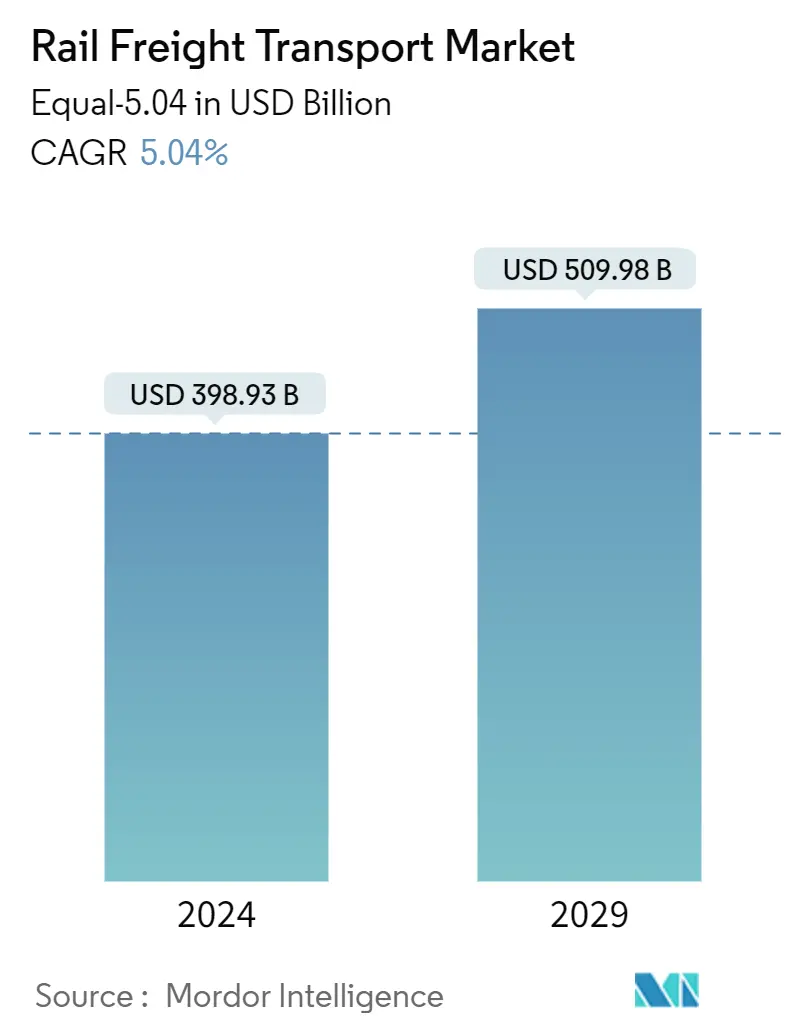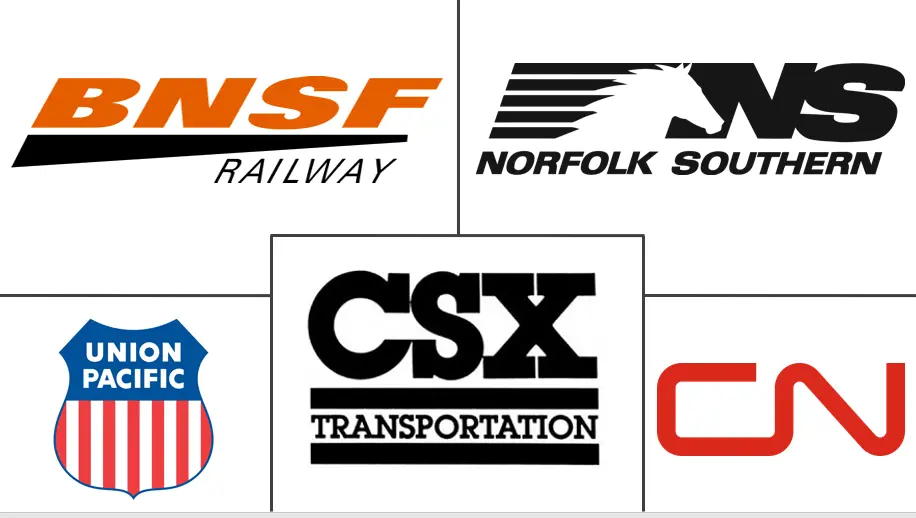Market Size of Rail Freight Transport Industry

| Study Period | 2020-2029 |
| Market Size (2024) | USD 398.93 Billion |
| Market Size (2029) | USD 509.98 Billion |
| CAGR (2024 - 2029) | 5.04 % |
| Fastest Growing Market | Asia Pacific |
| Largest Market | Asia Pacific |
Major Players
*Disclaimer: Major Players sorted in no particular order |
Need a report that reflects how COVID-19 has impacted this market and its growth?
Rail Freight Transportation Market Analysis
The Rail Freight Transport Market size in terms of Equal-5.04 is expected to grow from USD 398.93 billion in 2024 to USD 509.98 billion by 2029, at a CAGR of 5.04% during the forecast period (2024-2029).
Intermodal transportation, which involves the use of multiple modes of transportation (e.g., rail and truck), has been gaining popularity. Railroads play a key role in intermodal logistics, offering an efficient and cost-effective solution for moving freight over long distance. Several significant factors, such as the growth of the world's population and continued urbanization, which contribute to an increasing demand for rail freight services, strongly influence market growth.
Artificial intelligence's power is harnessed by leading players in the rail freight market to provide accurate analysis, real-time transport operations, traffic planning, and predictive operation. Artificial intelligence is essential in optimizing rail operations, increasing capacity, and improving efficiency.
The Indian Railways carried more than 1.42 billion tonnes of freight in the financial year 2022. It was in the same category as road transport, with the 2nd most significant share of the freight logistics industry. Freight transport depends on land modes in a country with many metropolitan areas and inland states.
In 2022, the EU rail freight transport for central undertakings (total volume of goods transported of at least 200 million tonne-kilometres or at least 500 000 tonnes) reached 398 billion tonne-kilometres (tkm), almost at the level registered in 2018.
The US railroads produced 1,128,573 carloads in November 2023, a decrease of 102 cars compared to the same month last year. The AAR reported that in November 2023, 1,279,906 containers and trailers were hauled by US railroads, an increase of 60,486 units or 5% compared to November 2022.
In July 2023, AI-enabled software was launched by RailVision Analytics, Canada's leading rail industry software company, that enables locomotive engineers to make minor adjustments for train operation and save significantly on fuel costs. This innovative technology supports efforts to reduce greenhouse gas emissions from freight and passenger trains.
In addition, Rail freight transport is critical in supporting a country's economic performance due to its paramount role in ensuring a seamless and efficient flow of goods locally and across borders. Rising freight volumes, infrastructure development, and adoption of sophisticated technology drive market growth. The market growth is fueled by technological advances and efforts by various countries, such as China, to boost rail freight volumes to curb pollution.
Given the huge pollution contribution of this sector, it has become a major imperative to reduce carbon emissions in freight transport. Depending on the geography, state of infrastructure and availability of fuel, the modal split between freight transport is different. A modal shift from road to rail could be part of concerted action in India. The challenges of attracting more cargo to train with a focus on expanding the railway network have been progressively addressed by Indian Railways and its subsidiary companies.
